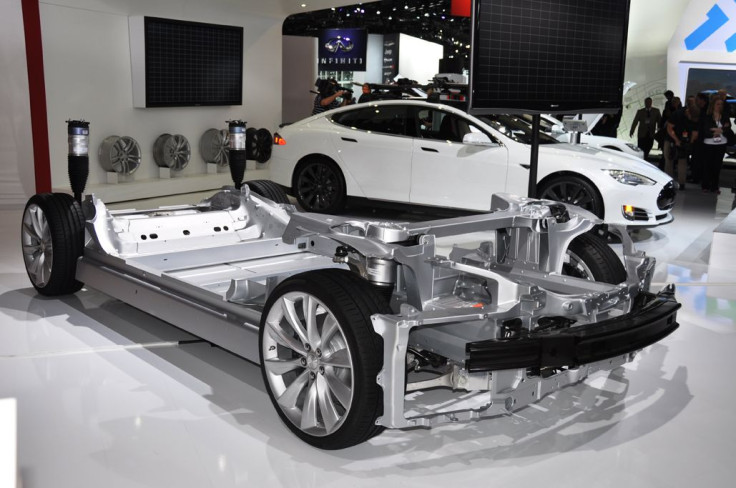Detroit Auto Show 2014: $40,000 ‘Model E’ From Tesla Motors (TSLA) Will Have A ‘Practical’ Range, Says Company’s Head Of Global Sales

UPDATE: A Tesla insider at the Detroit Auto Show told IBTimes in an informal, off-the-record conversation: "It's hard to imagine that the Gen 3 wouldn't get 200 miles in range." He added that there might be a upgrade option similar to the Model S's 60 kWh battery (208 miles) and 85 kWh battery (265 miles) choices. Also, when asked if it's better to refer to the lower-cost Tesla electic car expected out in 2017 as the "Gen 3" or the "Model E" (a name Tesla trademarked last year) he said it's better to call it the "Gen 3" for now, implying that Tesla has not publicly confirmed the name of the vehicle.
*
Jerome Guillen, Telsa Motors Inc. (NASDAQ:TSLA) head of global sales, wouldn’t say Tuesday what the range of the company’s planned lower-cost electric vehicle, dubbed the “Gen 3,” would be, but his answer indicated that it’s not likely to meet the same range expectation seen in the luxury Model S sedan.
“It will have a practical range,” he demurred, when asked by International Business Times during a question-and-answer session at the 2014 Detroit Auto Show, saying customers would be satisfied with what the company has planned for a $40,000 electric car, due out in 2017.
The range of the upcoming lower-cost Tesla electric vehicle is important to the company in light of the current and upcoming mix of smaller electric vehicles. For example, the Nissan Leaf, the most popular electric vehicle in history based on sales volume, has a range of about 75 miles with a starting price of $28,800. The BMW i3, which will go on sale in the U.S. later this year, has a range of about 80 miles for a base price of about $41,000. For Tesla to succeed in the market for smaller, nonluxury EVs, it will need to meet or exceed the ranges of cars in that segment that will be out in 2017.
Guillen is indicating that the Model E will not hit the current 208-mile range of the Model S, or the 265-mile range of the higher-priced 85 kWh battery packs. However, Tesla uses different batteries than the ones used by current smaller EVs, so under current technology it’s likely that if Tesla’s Model E were available today it would, like the Model S, be a segment leader in electric range. The question is how well competing models in the mass-market EV segment, such as the Leaf, i3, Chevy Spark, Ford Focus electric and others, will do to boost range over the next three years.
Tesla’s Fourth-Quarter Sales Exceeded Expectations
Guillen also announced that Tesla delivered 6,900 Model S sedans in the fourth quarter of last year, 20 percent more than the company’s prior guidance. This means Tesla sold 22,900 Model S sedans, more than the 21,000 CEO Elon Musk had said earlier this year he expected to deliver.
Two New Superchargers Went Online Tuesday
The company is now two steps closer to a coast-to-coast corridor of its Supercharger network that will provide Model S owners free power to drive from New York to Los Angeles via Chicago.
Musk Tweets: Model S Was Not Recalled
In related news, Musk Tweeted Tuesday:
Some confusion in media reports today. No Tesla vehicles are being physically recalled by Tesla.
- Elon Musk (@elonmusk) January 14, 2014This was a response to a Bloomberg News report saying the company is recalling some NEMA 14-50 adapters for risk of overheating while they’re used to charge the vehicles. Tesla spokesperson Liz Jarvis-Shean said: "The term 'recall' is outdated,” apparently not acknowledging that the term “recall” can apply to products other than cars. Tesla is shipping new adapters to affected customers.
© Copyright IBTimes 2024. All rights reserved.





















